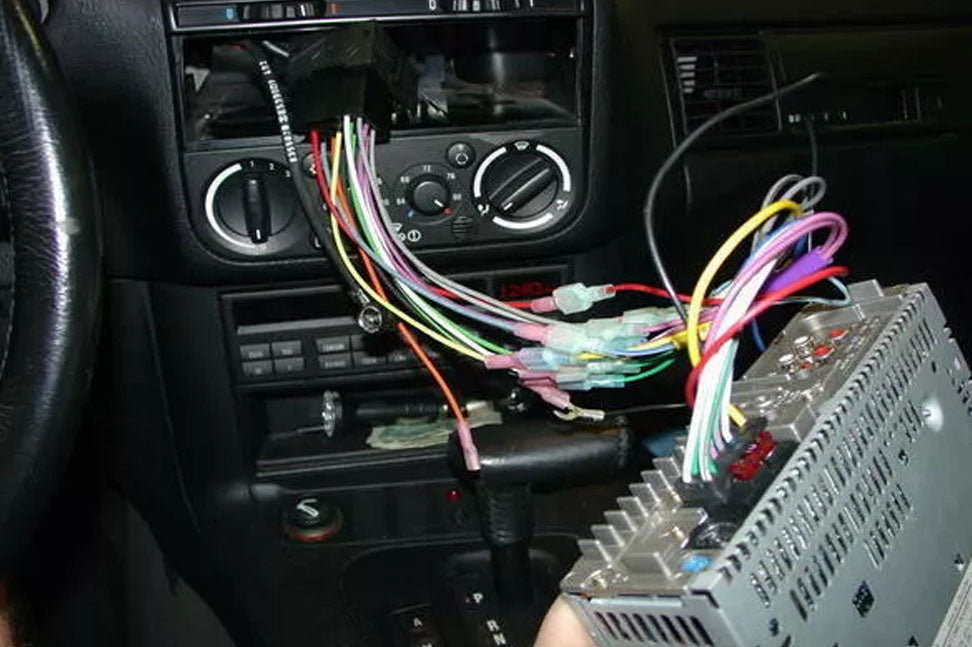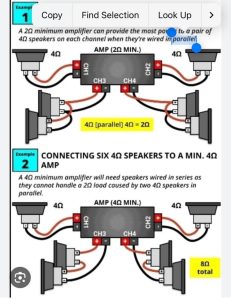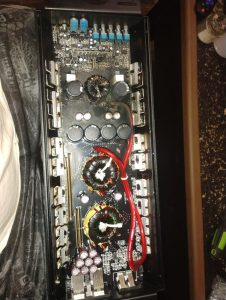Are you having trouble with your car stereo sound but unsure if the RCA outputs are the problem? Testing RCA outputs might sound tricky, but it’s easier than you think.
Understanding how to check these connections can save you time, money, and frustration. In this guide, you’ll learn simple, step-by-step methods to test your RCA outputs quickly and accurately. Keep reading, and you’ll soon have your car stereo sounding just right.

Credit: eliteautogear.com
Tools Needed
Testing RCA outputs on a car stereo requires specific tools. These tools help check the connection and sound quality. Having the right equipment makes the process easier and more accurate.
Some tools are essential for every test. Others are optional but useful for detailed checks.
Essential Testing Equipment
- Multimeter:Measures voltage and continuity in RCA cables.
- RCA Test Cable:Connects the stereo to testing devices safely.
- Speaker or Amplifier:Used to listen for audio signals during testing.
- Audio Source:A device that plays sound through the RCA output.
Optional Accessories
- Oscilloscope:Shows detailed signal waveforms from RCA outputs.
- Signal Generator:Creates test tones for more precise audio checks.
- Extension Cables:Provide extra length for easier access to connections.
- Cleaning Kit:Keeps RCA connectors free from dirt and corrosion.
Identify Rca Outputs
Identifying RCA outputs on a car stereo is the first step in testing them. These outputs send audio signals from your stereo to external devices like amplifiers or speakers. Knowing where to find them helps you check if your stereo works correctly. It also makes connecting other audio equipment easier.
Locating Rca Jacks
RCA jacks are usually found on the back of the car stereo unit. They look like small, round holes. You might see two or more of them grouped together. Sometimes, they are labeled as “Front,” “Rear,” or “Subwoofer” to show their purpose. In some models, RCA outputs may be hidden behind a panel or cover.
Look for a cluster of these jacks near the wiring harness or antenna input. They are often placed in pairs, one for the left channel and one for the right channel. If you cannot find them, check your stereo’s manual for exact locations.
Color Coding Basics
RCA outputs use color codes to help identify the audio channels. The most common colors are:
- Red:Right audio channel
- White or Black:Left audio channel
These colors match the RCA plugs on your audio cables. Red plugs go into red jacks, white or black plugs into their matching jacks. This color system prevents mistakes and keeps the audio balanced.
Sometimes, the subwoofer output uses a different color, like purple or orange. Always check the stereo’s manual if the colors seem different.
Prepare Your Setup
Getting your setup ready is key to accurately testing RCA outputs on your car stereo. Without proper preparation, you risk misreading the signals or even damaging your equipment. Let’s make sure everything is in place so you can focus on what matters—checking the audio quality and signal flow.
Powering The Stereo
Your car stereo needs to be powered on for testing RCA outputs, but be cautious about how you do this. Use a stable 12V power supply or connect it directly to your car battery if you’re working inside the vehicle.
Pay attention to grounding—poor grounding can cause noise or false readings during your test. If you’ve ever had a buzzing sound when testing audio gear, it’s usually a grounding issue.
Have you checked that all cables and connectors are firmly attached before powering up? Loose connections often lead to frustrating troubleshooting later on.
Connecting Testing Devices
Next, connect your testing equipment such as a multimeter or an oscilloscope to the RCA outputs. Use high-quality test leads to avoid signal loss or interference.
Make sure to match the positive and negative terminals correctly. Misconnecting these can give you inaccurate results or potentially damage your devices.
Consider using a simple RCA-to-3.5mm adapter if your testing device requires it. This small step can save you time and prevent compatibility headaches.
Credit: www.diymobileaudio.com
Test Signal Output
Testing the signal output of RCA connectors on a car stereo helps ensure proper audio transmission. This step checks if the stereo sends audio signals correctly through the RCA cables. It also identifies any faults in the output before connecting to amplifiers or speakers. Testing the signal output is simple and requires basic tools.
Using A Multimeter
A multimeter measures electrical signals in the RCA output. Set the multimeter to the AC voltage setting. Connect the multimeter’s positive lead to the RCA’s center pin. Attach the negative lead to the outer ring of the RCA connector. Play music through the stereo at a moderate volume.
Watch the multimeter reading. A fluctuating voltage indicates the signal is present. If the reading stays at zero, the output may be faulty or disconnected. This method helps detect if the RCA jack sends audio signals correctly.
Using An Rca Cable And Speaker
Testing with an RCA cable and speaker gives a practical check of the output. Connect one end of the RCA cable to the car stereo output. Attach the other end to a powered speaker or amplifier input. Turn on the stereo and play audio.
Listen for sound from the speaker. Clear audio means the RCA output works well. No sound or distortion suggests a problem in the RCA output or cable. This simple test confirms the stereo sends audio signals properly through the RCA connectors.
Troubleshoot Common Issues
Testing RCA outputs on a car stereo can sometimes lead to common issues. Troubleshooting these problems helps ensure clear sound and proper signal flow. Identifying the root cause saves time and prevents further damage. Below are typical problems and ways to address them effectively.
No Signal Detected
No signal means no sound from the speakers. First, check if the RCA cables are firmly connected to both the stereo and the amplifier. Loose or damaged cables often cause this issue.
Inspect the RCA cables for visible cuts or wear. Swap cables with a known working set to rule out cable defects. Also, verify the car stereo’s settings to ensure the RCA outputs are enabled.
Test the amplifier input with another audio source. If the amplifier works fine, the issue may be with the stereo output. Resetting the stereo system can sometimes restore signal output.
Distorted Audio Output
Distorted sound means the audio is unclear or crackling. Check the RCA cables for damage or poor connections, as this often causes distortion.
Make sure the volume levels on both the stereo and amplifier are not set too high. High volume can cause audio clipping and distortion.
Grounding issues in the car’s electrical system can also cause distortion. Verify that the stereo and amplifier share a common ground point. Using a multimeter can help find grounding problems.
Try using shielded RCA cables to reduce interference from other electronic devices in the car.
Safety Tips
Testing RCA outputs on a car stereo requires care to avoid injury or damage. Following safety tips protects both you and your equipment. Simple precautions help keep the process smooth and safe.
Handling Electrical Components
Always disconnect the car battery before testing RCA outputs. This prevents electric shocks and short circuits. Use insulated tools to avoid accidental contact with wires. Keep your hands dry and avoid wearing metal jewelry. Work in a well-lit area to see connections clearly. Never touch live wires or terminals directly.
Preventing Damage
Check your multimeter or testing device for proper settings before use. Avoid applying excessive force on connectors or cables. Use the correct probes designed for RCA outputs. Make sure all connections are secure but not tight enough to damage ports. Avoid testing in wet or damp conditions. Store your tools properly after testing to keep them in good condition.

Credit: www.reddit.com
Frequently Asked Questions
How Do I Check Rca Output Signals On A Car Stereo?
Use a multimeter or RCA tester to check signal voltage on RCA outputs. Connect the tester to RCA jacks. Play audio and observe if voltage fluctuates, confirming output signal presence.
What Tools Are Needed To Test Car Stereo Rca Outputs?
You need a digital multimeter or an RCA signal tester. Also, have RCA cables and a test audio source ready. These tools help measure output voltage and signal integrity.
Why Is Testing Rca Outputs Important For Car Stereos?
Testing ensures RCA outputs deliver proper audio signals. It helps diagnose connection issues or faulty components. Proper testing improves sound quality and system reliability.
Can I Test Rca Outputs Without Removing The Stereo?
Yes, you can test RCA outputs by accessing rear jacks without removing the stereo. Use probes carefully to avoid damaging connectors or wiring during testing.
Conclusion
Testing RCA outputs on your car stereo is straightforward. Start with basic tools. Follow the guide to check connections properly. Ensure your stereo system works perfectly. Regular testing can prevent unexpected audio issues. Always handle equipment with care for safety.
Understanding these steps can enhance your car audio experience. Troubleshooting becomes easier once you know the process. Don’t hesitate to seek professional help if needed. This ensures optimal sound quality in your vehicle. Keep your car stereo running smoothly with these tips.
Enjoy your music journeys with clear, crisp audio.



